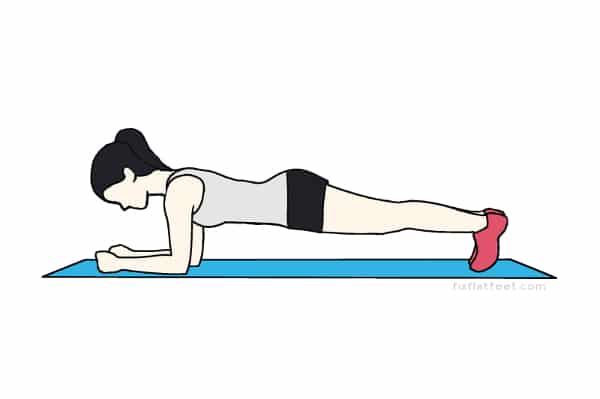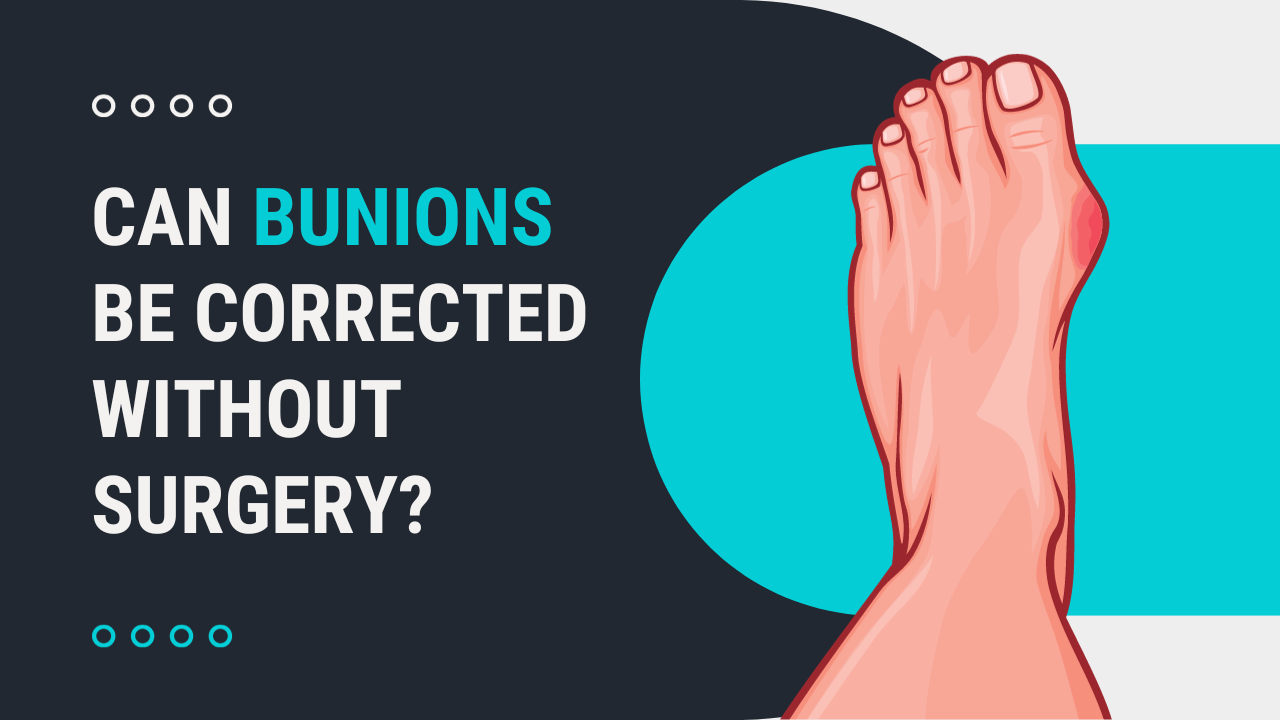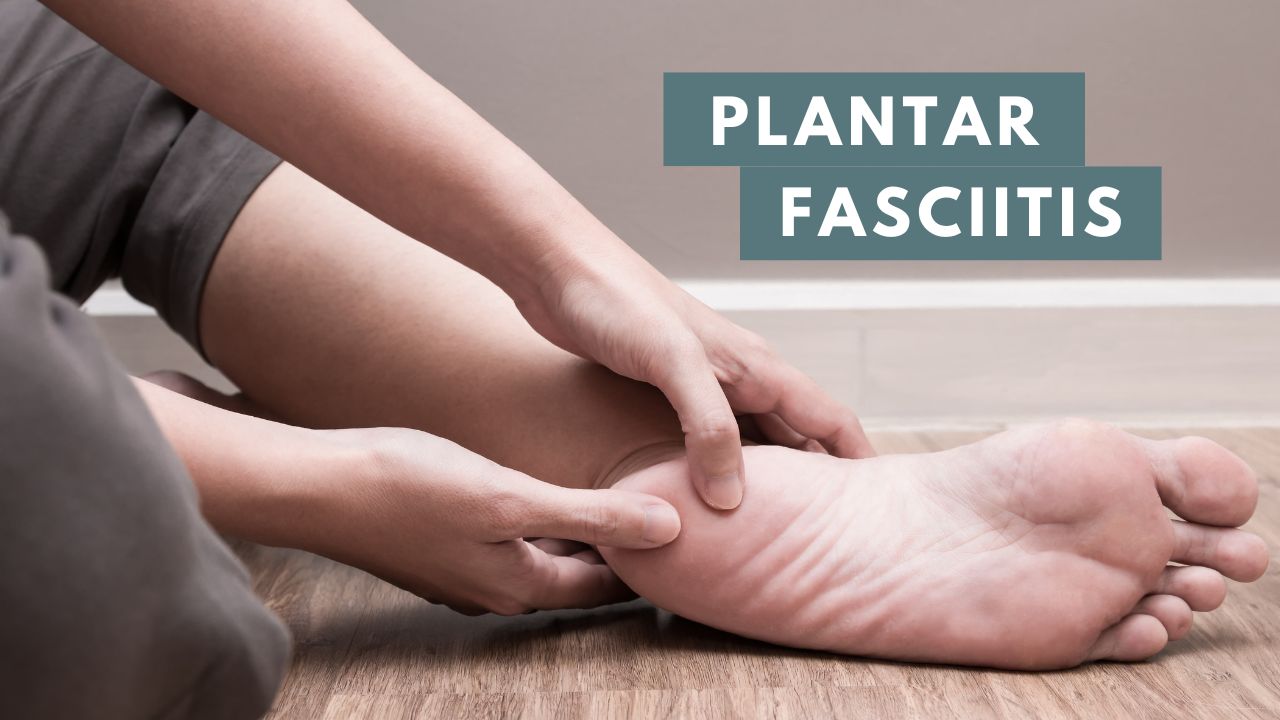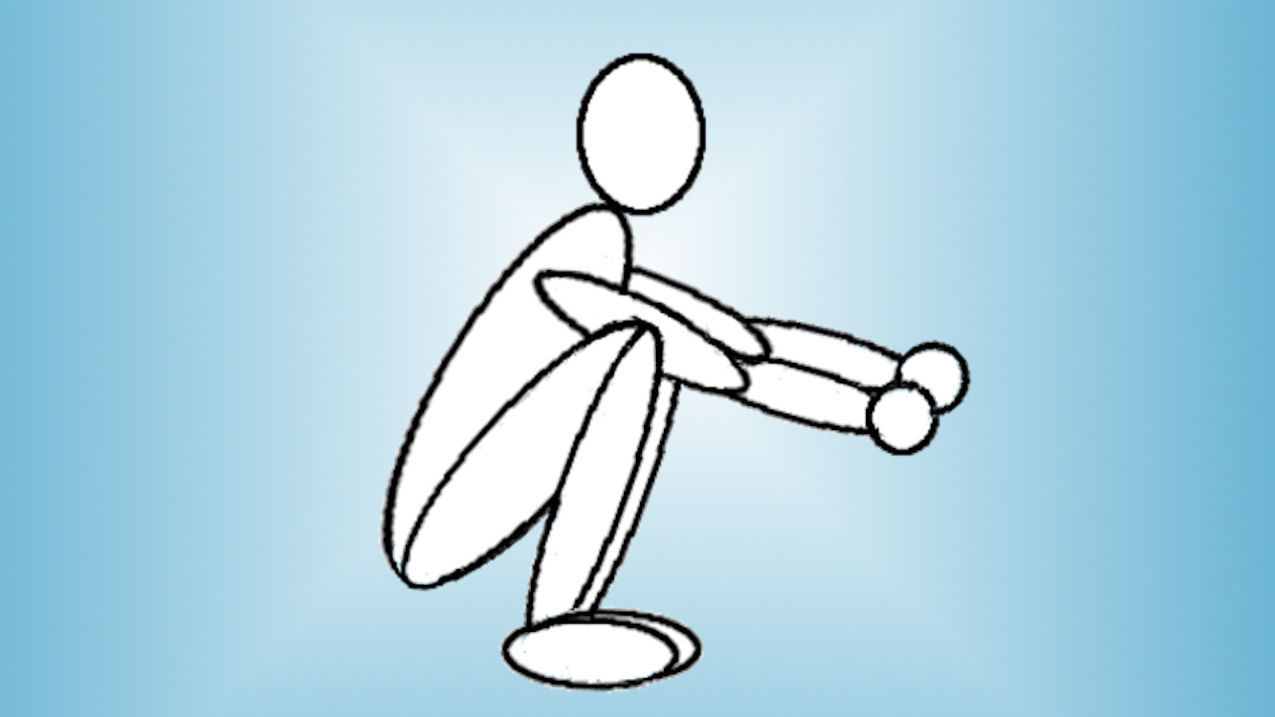Anterior pelvic tilt is a very common posture. It occurs when the front of the pelvis tilts forward creating a large curve in the lower back. Another way to think about anterior pelvic tilt is by imagining the pelvis is a glass of water. Anterior tilt would be like tipping the glass forward to pour the water out.
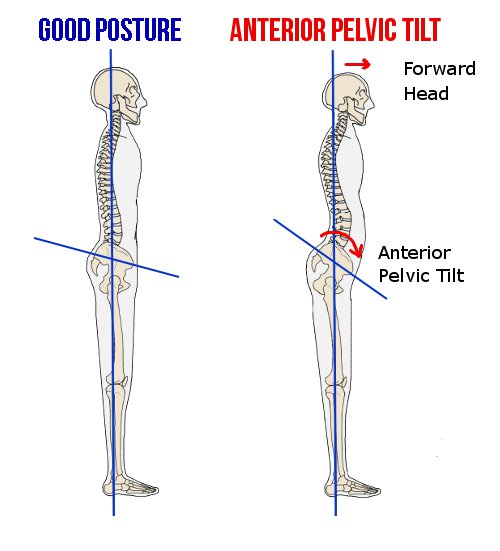
I learned from this project that the hips and pelvis play a role in the shape and function of the foot arch. Anterior pelvic tilt is sometimes associated with changes in the angle of the joints in the hip, knee, and ankle. This change in alignment can place increased stress on the small muscles supporting the arch.
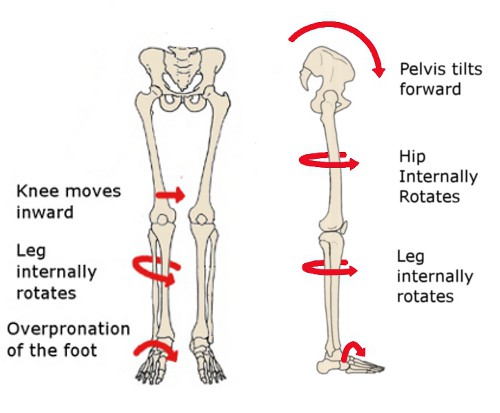
Some of the largest muscles in the body surround the hips and pelvis. Placing the pelvis in a more neutral using those large muscles might reduce the force on the inside of the foot that would cause it to collapse.
Causes of Anterior Pelvic Tilt
Anterior pelvic tilt is generally thought to be the result of a muscular imbalance. The gluteus and abdominal muscles function to rotate the pelvis backward. Weakness or poor control of these muscle groups can cause the pelvis to drop in the front.
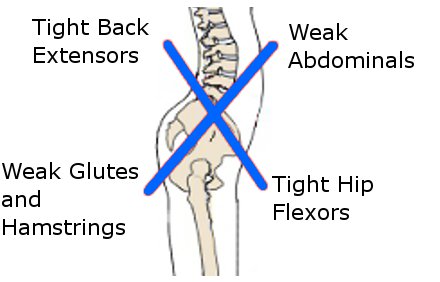
Tightness or limited flexibility in the hip flexor muscles that cross the front of the pelvis and tight lower back muscles may also contribute to the pelvic tilt.
This muscle imbalance may occur because many of us spend a lot of time in a flexed position. Consequently, the body can become adapted to positions that we spend a lot of time in. Sitting is a prime example. With sitting, the hip flexors are in a shortened position and the glutes are less active than with standing or walking.
Not many everyday activities require high degrees of hip extension and loading of the glutes and hamstrings.
For me, I also think limited ankle flexibility was a factor. Like with flat feet, the anterior tilt was another way my body compensated for a lack of ankle flexibility.
Correcting Anterior Pelvic Tilt
Reducing anterior pelvic tilt posture was part of the program I used to develop the arches in my feet. In theory, it involves strengthening the hip extensor and abdominal muscles and stretching the hip flexor and back muscles. For example:
Hip Flexor Stretch
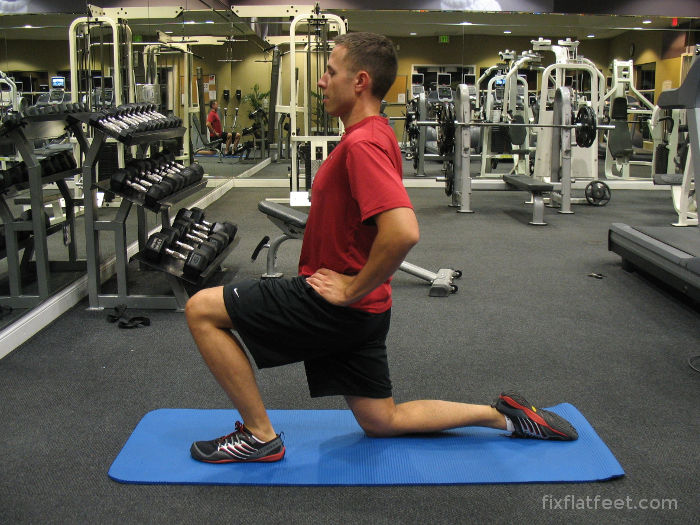
Hip Bridge
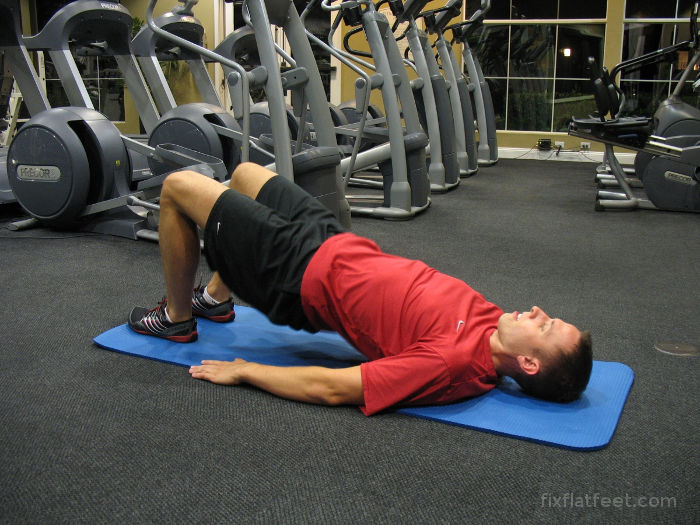
One case study showed that daily strengthening exercises for the glute, hamstring, and abdominal muscles resulted in a significant reduction in anterior pelvic tilt.
Besides performing exercises like the ones pictured above, I also concentrated on holding a neutral pelvic position while standing and walking.
References
- Yoo WG. Effect of the individual strengthening exercises for posterior pelvic tilt muscles on back pain, pelvic angle, and lumbar ROM of a LBP patient with excessive lordosis: a case study. Journal of physical therapy science. 2014 Feb;26(2):319.
